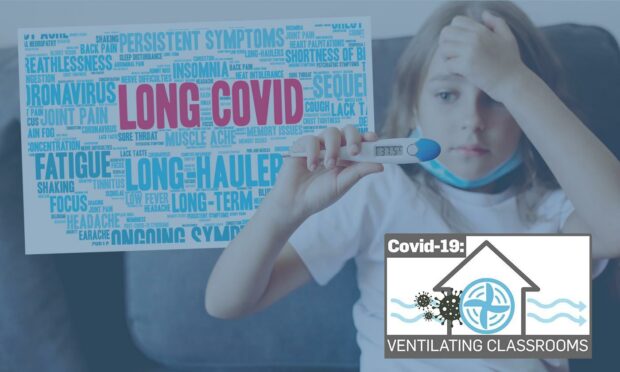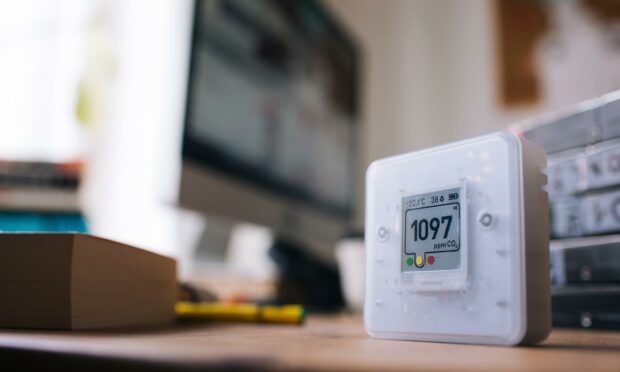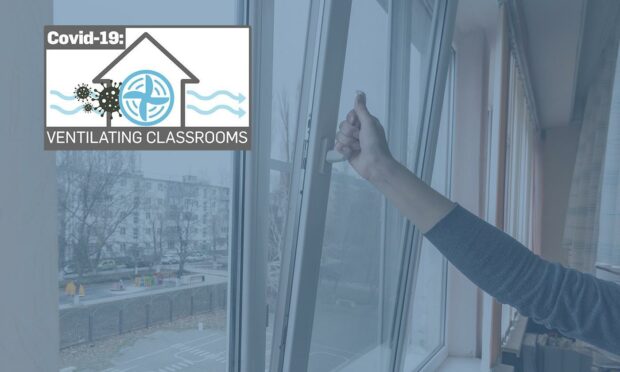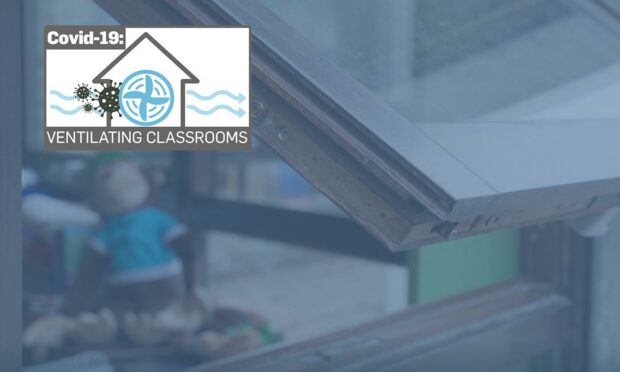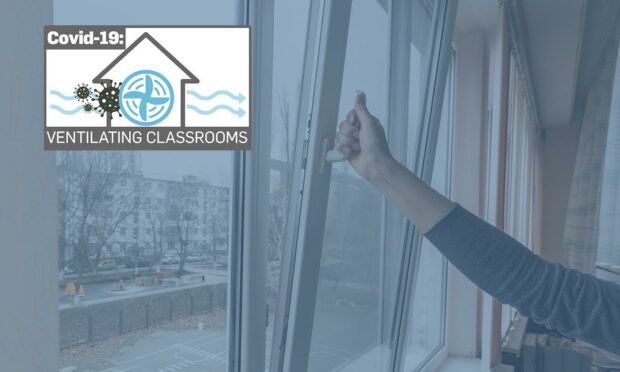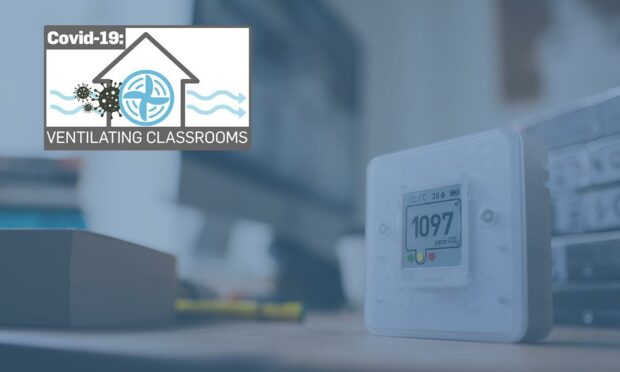When eight-year-old Anna Hendy contracted Covid-19 in April 2020 it appeared to be a mild case and passed quickly.
But a few weeks later she fell very, very ill due to an inflammatory response to the virus.
Eighteen months later, she still suffers from fatigue, migraines and high temperatures and continues to learn from home, unable to attend school.
Now a prominent voice for children suffering from long covid, Anna’s mother Helen Goss is campaigning to ensure good air quality in schools to reduce the risk of transmission among pupils.
How is air quality in schools monitored?
Primary and secondary schools across Scotland have been provided with carbon dioxide monitors but Helen wants a monitor in every classroom and, more importantly, action taken where they signal increased levels and a greater risk of Covid-19 infection.
The monitors can indicate the potential for increased presence of airborne droplets of the virus if someone is infected, by showing when CO2 breathed out builds up and a room needs fresh air.
Helen, a spokeswoman for the Long Covid Kids Scotland group, said: “It’s all well and good having carbon dioxide monitors but the crux of the issue is once they have the monitors they have to use the data from the monitors to make the improvements.”
Teachers, she says, are telling her that CO2 monitors are flagging ventilation issues which opening windows is insufficient to curb.
At the moment it just seems as though the CO2 monitors are pretty ornaments in the classroom.”
Helen Goss, Long Covid Kids Scotland
She said: “We are getting a lot of anecdotal messages through saying ‘I’m a teacher, my carbon dioxide monitor has been red all week and I’m just told to open the window and it doesn’t make a difference, they’re still red.’
“This is where the problem lies. Once the CO2 monitors indicate the air quality is poor what action do you take? I think this is where local authorities are failing.
“At the moment it just seems as though the CO2 monitors are pretty ornaments in the classroom.”
And with winter approaching, the challenge will become greater, she says.
“It’s okay in the summer when you can open the windows, open the doors, and get that free flow of air through the building.
“But we are coming into winter and it’s going to be cold.”
Helen, of Westhill, Aberdeenshire, fears there is a lack of awareness of long Covid among children and the increase in Covid cases last term means they will hear of more youngsters affected by the lasting condition in the coming weeks.
Covid cases in local schools last term
Cases among schoolchildren peaked during September, with 789 and 275 pupil absences due to Covid-related illness recorded in Fife and Dundee respectively on September 10.
Pupil absences hit 112 in Angus and 184 in Perth and Kinross (on Sep 7 and Sep 24) but had dropped in all areas by the October holiday.
Ms Goss said: “It’s frustrating because the narrative has always been and continues to be that kids are mildly affected if affected at all and there’s no harm coming to them.
“But in reality that’s not what we’re seeing at all.
